 |
 |
 |
| |
COVID Brings Drops in HIV Care Visits,
Viral Load Measures, and ART Stops
|
| |
| |
IDWeek, September 29-October 3, 2021
Mark Mascolini
After the COVID-19 pandemic arrived in the United States, numbers of HIV care visits, viral load tests, and antiretroviral therapy discontinuations all fell in a comparison of 4806 pre-COVID HIV patients and 4992 during-COVID HIV patients [1]. Researchers from Epividian and ViiV Healthcare suggested the fall in treatment discontinuations could reflect less frequent follow-up of these people with HIV during COVID. Virologic failures were rare in both periods.
The COVID-19 pandemic disrupted routine healthcare across the globe in countless ways. This analysis of the longitudinal OPERA Cohort aimed to compare pre-COVID and during-COVID rates of clinical visits, viral load monitoring, ART discontinuation, and virologic failure in US adults responding well to ART before the pandemic.
OPERA prospectively collects routine clinical data from people with HIV cared for in 85 US clinics in 19 states and 1 territory. Participants in this analysis had to be at least 18 years old, have at least 1 clinical encounter within the 2 years before October 31, 2020, and had to switch (with a viral load below 200 copies) from any antiretroviral regimen to dolutegravir/lamivudine or to a dolutegravir- or bictegravir-based 3-drug combination between May 1, 2019 and April 30, 2020.
Epividian and ViiV Healthcare researchers compared four outcomes before COVID (May 1, 2019 to February 28, 2020) and during COVID (March 1, 2020 to October 31, 2020): (1) clinical visits (either in-person scheduled or walk-in outpatient, inpatient, emergency, or lab visits; or a telehealth-phone or video-encounter), (2) viral load measurement, (3) ART discontinuation (changing any component of a regimen), and (4) virologic failure (2 viral loads at or above 200 copies). The investigators used univariate Poisson regression to estimate incidence rates.
The pre-COVID population included 4806 antiretroviral-treated adults and the during-COVID population had 4992 treated adults. In-person clinical visits dropped by almost half from before COVID (incidence rate 9.84 visits per person-year [py], 95% confidence interval [CI] 9.70 to 9.98) to during COVID (5.03 per py, 95% CI 4.96 to 5.11), while telehealth visits jumped almost 9-fold from 0.23 per py (95% CI 0.21 to 0.25) before COVID to 2.06 per py (95% CI 2.01 to 2.11) during COVID. But the big gain in telehealth sessions did not make up for dwindling in-person visits, so the overall visit rate dropped about 30% from 10.07 per py (95% CI 9.93 to 10.21) before COVID to 7.10 per py (95% CI 7.01 to 7.19) during COVID.
Viral load measurements dropped by one third from before COVID (incidence rate 2.99 per py, 95% CI 2.92 to 3.07) to during COVID (1.97 per py, 95% CI 1.92 to 2.02). The antiretroviral discontinuation rate slipped by one third from 14.3 per 100 py (95% CI 12.7 to 16.1) before COVID to 9.6 per 100 py (95% CI 8.6 to 10.8) during COVID.
The researchers counted only 13 virologic failures (0.3%) before COVID and 29 (0.6%) during COVID. Those declines translated into incidence rates of 0.67 per 100 py (95% CI 0.39 to 1.15) before COVID and 0.91 per 100 py (95% CI 1.00 to 1.32) during COVID, a nonsignificant change.
The researchers noted that telehealth visits are safe and convenient (except for people with limited technology or privacy). But sole dependence on telehealth cuts access to lab monitoring and to physical assessments such as screenings for sexually transmitted infections. They suggested that falling antiretroviral discontinuation rates during COVID may reflect less frequent follow-up. The investigators cautioned against taking too much reassurance from the nonsignificant change in virologic failures from before COVID to during COVID, noting that less frequent viral load testing could leave more virologic failures undetected.
Reference
1. Pierone G Jr, Fusco JS, Brunet L, et al. The impact of the COVID-19 pandemic on clinical follow-up, monitoring and regimen discontinuation for people living with HIV in the US. IDWeek, September 29-October 3, 2021. Abstract 886.
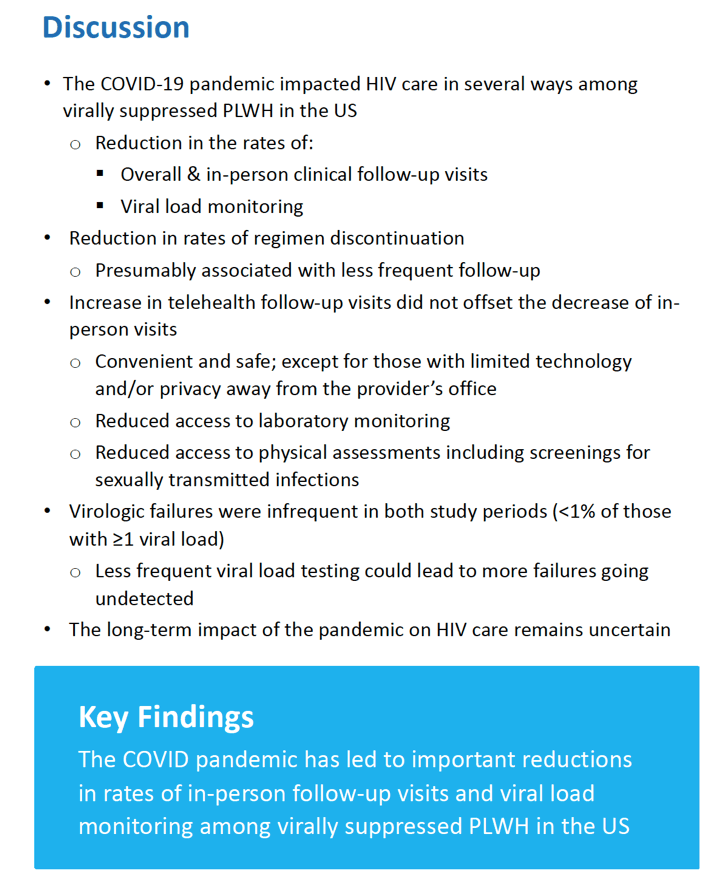
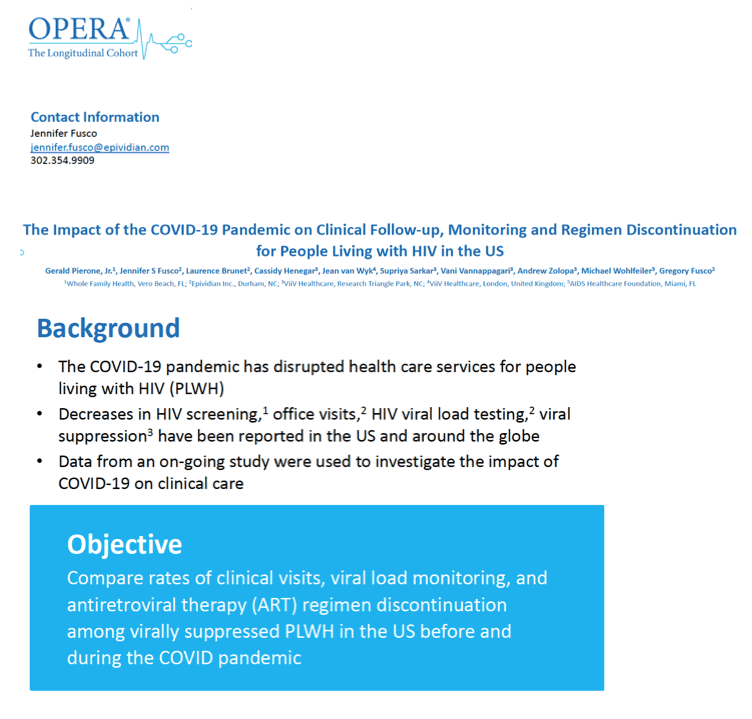
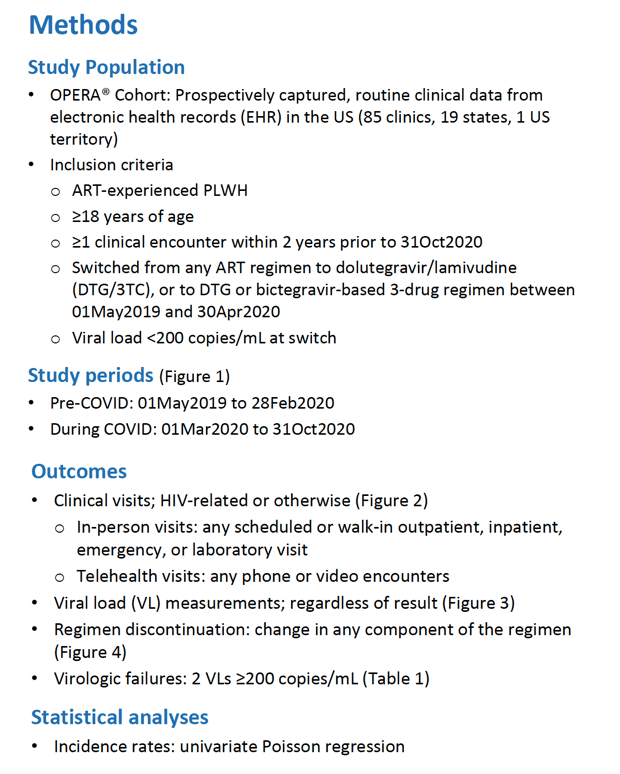
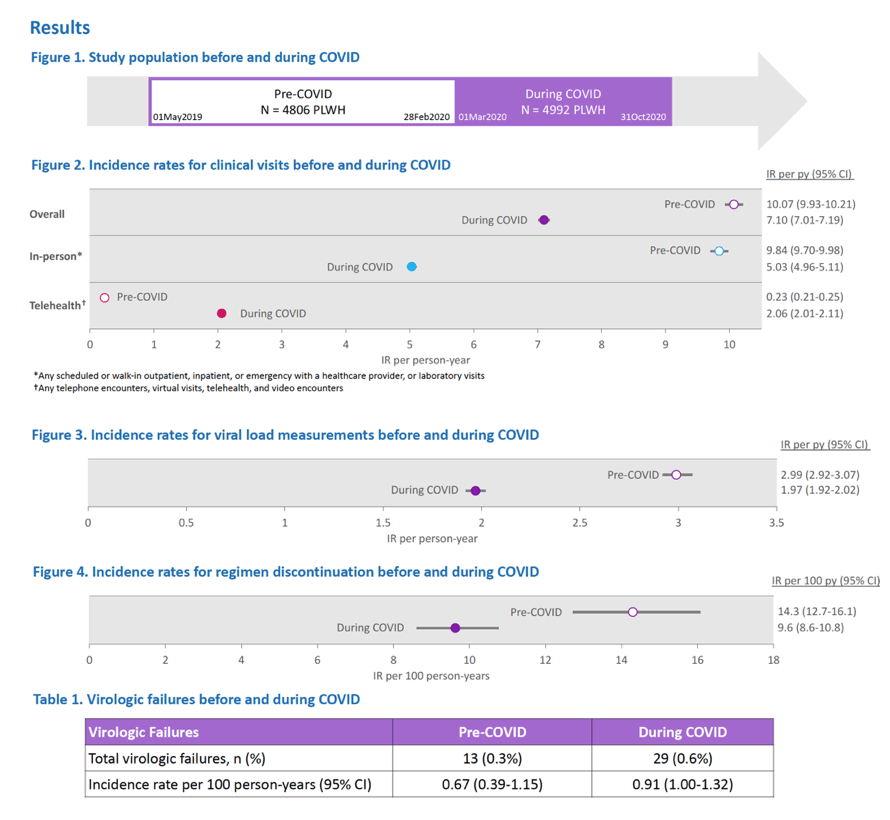
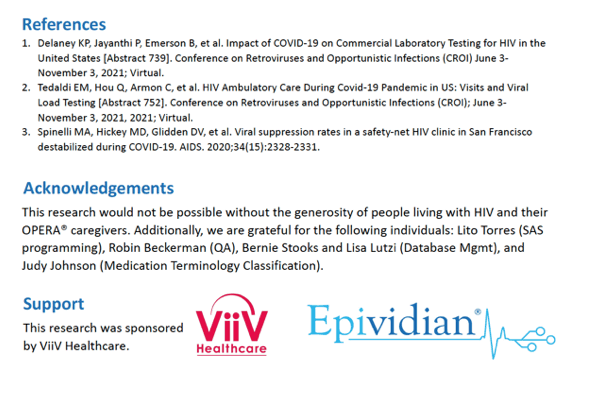
|
| |
|
 |
 |
|
|